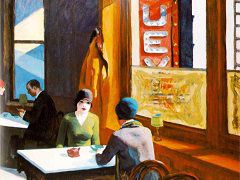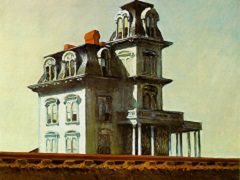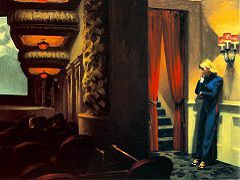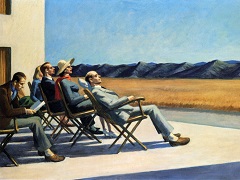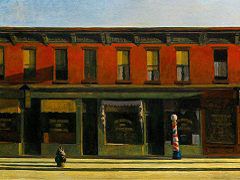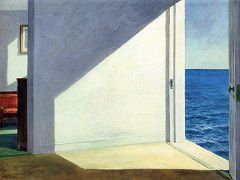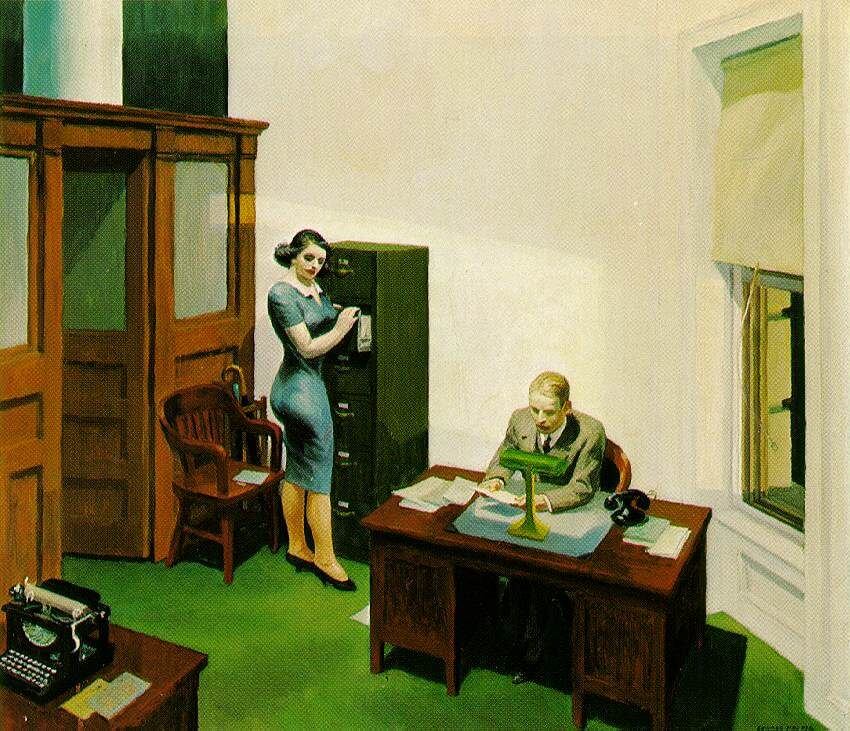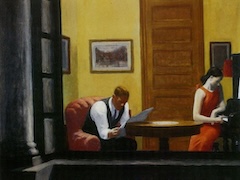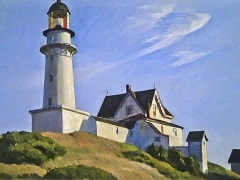Morning In a City, 1944 by Edward Hopper

Apart from their actual subjects, Hopper's pictures also address the issue of perception. They include the viewer's eye, despite the fact that the figures appear entirely self-absorbed and unconscious of being observed. Hopper suggests that the figures we see do not realize they are seen. We remain outside their lives, looking in; for them we are not there, non-existent. At the same time, they perceive things that remain hidden to us, beyond our field of view. This is especially clear in the compositions with a woman at a window. Often she gazes into a space that is either concealed from the viewer or outside the picture entirely. Or is she looking into nothingness? Might she be so preoccupied with herself that she is oblivious of everything going on around her?
Many of Hopper's paintings contain a covert eroticism. It is not explicit, merely hinted in numbers of tiny details. This is especially true in the depictions of women, surprised in dishabille in their hotel room or apartment. Apparently awakened by the sun, they gaze musingly out the window as if wondering whether this might be the first day in a new life: Morning in a City, 1944, Morning Sun, 1952, A Woman in the Sun, 1961. The erotic suspense in these scenes derives from the absence of a partner, which tempts the viewer -male certainly, female perhaps - to assume the role and enter a stranger's story. Hopper's women are vulnerable, marked by disappointment, in need of protection. Yet they still seem to harbor hopes and expectations. We have the impression that there is something undefined, perhaps unnamable, but at least beyond our comprehension, to which they wish to surrender themselves. A woman turns to the rising sun, opens herself to the ultimate source of light - reminding us that nature extends even into the most desolate corners of the city.



